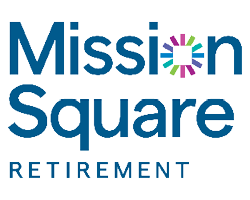Neighborhoods are an essential aspect of local democracy, and for neighborhood groups to be truly democratic, there are at least five core principles they should embody:
- Representation: Do they reflect who actually lives there?
- Participation: Can residents easily join, speak, and vote?
- Transparency: Are decisions visible and accessible?
- Accountability: Do members answer to the public?
- Impact: Do they have real influence or just symbolic input?
The problem is that most existing systems at the neighborhood level excel in participation opportunities, but often fall short in representation and impact. A few existing neighborhood governance organizations include:
- Washington, D.C. Advisory Neighborhood Commissions (ANCs)
ANCs were established in 1976, under the D.C. Home Rule Act. They operate across 8 wards, with a total of 40 ANCs, and each one has an unpaid commissioner. They are advisory only, but city agencies (like the Zoning Commission, ABRA, DDOT) must give their views weight under D.C. Code. They can issue resolutions on development, zoning, transportation, liquor licenses, public safety, etc. ANC’s must hold public monthly meetings, open to residents, and these are supported by the Office of Advisory Neighborhood Commissions (OANC). - Los Angeles, CA Neighborhood Councils (NCs)
NCs were established in 1999 under the L.A. City Charter. There are 99 NCs, each covering a population of 20,000 to 40,000 people. These groups involve business owners, workers, students, and property owners, not just residents, who can participate and vote. Each council elects a board of volunteers, typically 9–21 members. NCs are advisory and make recommendations to the mayor, city council, and city departments. They must be consulted on land use, budget, and community impact statements. NCs have small annual budgets ($32,000–$42,000) for outreach, community grants, and operations. NCs must hold open public meetings, as mandated by the Brown Act, which is supported by the Department of Neighborhood Empowerment (DONE), branded as EmpowerLA. - New York City, NY Community Boards (CBs)
CBs were established in 1963 and formalized in city charter revisions of 1975. There are 59 community boards (12 in the Bronx, 18 in Brooklyn, 12 in Manhattan, 14 in Queens, 3 in Staten Island). Each has up to 50 volunteer members, appointed by borough presidents, and half nominated by city council members. CBs are advisory but influential in land use and budget priorities. Boards must hold monthly public meetings, and these are supported by district managers and staff (paid city employees). - Anchorage, AK Community Councils (CCs)
CCs were established in 1975, under the Anchorage Municipal Charter. There are 38 community councils, each covering a geographic neighborhood area. CCs are independent, volunteer-run associations, often incorporated nonprofits. They are advisory, but provide input on planning, zoning, and local issues to the Anchorage Assembly and Mayor’s Office. They have some influence through public comment, resolutions, and testimony. Councils must be open to the public and typically meet monthly, with support from the Anchorage Federation of Community Councils (FCC), which provides coordination and administrative assistance.
Challenges of Community/Neighborhood Councils
All four systems share the same core democratic design: they’re hyper-local, advisory, and publicly open for participation. They aim to give residents a voice in matters of zoning, development, and neighborhood issues. They differ in how members are chosen, their funding, and the extent of formal authority; D.C. ANCs and L.A. NCs are elected and codified in a charter, NYC CBs are appointed and integrated into the city government, and Anchorage CCs are voluntary, community-based, with city recognition.
Across Washington, D.C.’s ANCs, L.A.’s Neighborhood Councils, NYC’s Community Boards, and Anchorage’s Community Councils, there’s a common goal: to democratize city decision-making at the neighborhood scale.
However, all of them face similar limitations, resulting from the need to:
- Broaden Representation: Elections (D.C., L.A.) often have extremely low turnout (sometimes <10% of eligible voters). Appointments (NYC) skew toward insiders and political allies. Some neighborhoods lack full awareness or access (language, technology, mobility).
- Increase Participation Access: Meetings are often long, bureaucratic, and held at inconvenient hours. Virtual access and language interpretation are inconsistent.
- Enhance Transparency & Accountability: Many residents don’t know when meetings happen or what’s on the agenda. Votes, attendance, and decision logs aren’t always easy to find.
- Strengthen Power & Impact: “Advisory” status means agencies can legally ignore recommendations. Limited budgets and a lack of control over zoning and permitting reduce relevance.
- Build Civic Infrastructure: Fragmented training and limited institutional memory. Volunteers often burn out or face complex bureaucratic hurdles.
Opportunities to Enhance Community/Neighborhood Councils
In Portland, Oregon (which has neighborhood associations like Anchorage), the city has experimented with “community-based organization” partnerships to include renter and immigrant voices alongside existing neighborhood groups. New York City has participatory budgeting pilots, where residents vote on how to spend part of the council district’s funds. A similar system could empower Community Boards or ANCs. Los Angeles’ EmpowerLA publishes a yearly “Democracy Index” that reports NC participation rates, candidate diversity, and responsiveness. Expanding that model could make all councils more accountable. New York’s Community Boards already issue “Community District Needs Statements” that inform city budget planning. Making that process binding (or partially funded) could significantly enhance local power. Anchorage’s Federation of Community Councils runs centralized communications, agendas, and minutes for every council, a model of administrative democratization that D.C. and NYC could adopt.
Some collective approaches could include:
- Automatic voter outreach and reminders, reserved seats for marginalized groups, stakeholder definition reform, and proactive candidate pipelines.
- Hybrid meetings, simplified rules, youth engagement, participatory budgeting, standardized online portals, performance dashboards, term limits or rotation rules, as well as independent ethics training and oversight.
- Statutory “veto review” power, funding for research and staff, participatory planning rights, and budget delegation.
- City-funded training and onboarding, cross-city exchange programs, community tech platforms.
Beyond structural fixes, democracy also relies on promoting a democratic culture and fostering innovation. This involves encouraging collaborative problem-solving through deliberative approaches, rather than relying solely on procedural votes. Here, the goal is to redefine “expertise” based on local lived experience, as well as making meetings inclusive spaces for dialogue, not just a bureaucratic process. There are many lessons to be learned from each system of neighborhood governance, which can help support these various processes.



